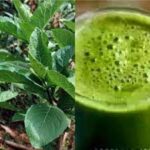Have you ever wondered about the fascinating world of oysters, their history, biology, and the enchanting process of pearl production? In this article, we will delve deep into the full story of oysters, exploring their rich history, the science behind their biology, the innovative methods of oyster farming, and the remarkable process through which they produce pearls. Join us on this journey as we uncover the hidden treasures of the ocean.
The History of Oysters
Oysters have been cherished delicacies for centuries, with a rich history that dates back to ancient civilizations. Cultures around the world have valued oysters not only for their delectable taste but also for their perceived aphrodisiac qualities and symbolic significance. In ancient Rome, oysters were considered a luxury food reserved for the elite, while in China, oysters were believed to bring good fortune and prosperity. The tradition of consuming oysters has endured through the ages, evolving into a beloved culinary tradition in many parts of the world.
The Biology of Oysters
Oysters are fascinating creatures that play a crucial role in maintaining the ecological balance of marine ecosystems. These bivalve mollusks are filter feeders, meaning they extract nutrients from the water by filtering out microscopic particles. Oysters are known for their ability to improve water quality by filtering pollutants and excess nutrients, making them valuable allies in the fight against environmental degradation. Their unique biology allows them to thrive in diverse habitats, from estuaries to rocky shores, showcasing their remarkable adaptability.
Oyster Farming: Innovation and Sustainability
The practice of oyster farming has revolutionized the seafood industry, providing a sustainable source of high-quality oysters for consumers worldwide. Oyster farmers employ innovative techniques to cultivate oysters in controlled environments, ensuring their growth and development are carefully monitored. By practicing responsible aquaculture methods, oyster farmers contribute to the conservation of wild oyster populations and promote the health of coastal ecosystems. Oyster farming has become a cornerstone of the seafood industry, offering fresh, delicious oysters to be enjoyed by food enthusiasts everywhere.
How Oysters Produce Pearls: Nature’s Marvel
The process through which oysters produce pearls is a marvel of nature, shrouded in mystery and wonder. When an irritant, such as a grain of sand or debris, enters an oyster’s shell, the oyster secretes layers of nacre, a crystalline substance that forms the iridescent coating of pearls. As the layers of nacre accumulate over time, they create the lustrous pearls that have captivated humans for centuries. This natural phenomenon showcases the oyster’s remarkable ability to transform adversity into beauty, creating treasures that are cherished around the world.
Pearl Harvesting (Video)
From their ancient origins to their modern-day significance, oysters continue to captivate us with their unique qualities and contributions to our world. As we unravel the mysteries of oysters, we gain a deeper appreciation for the wonders of the natural world and the incredible treasures it holds. So next time you enjoy a savory oyster dish or admire a gleaming pearl, remember the intricate journey that brought these treasures to your table.





